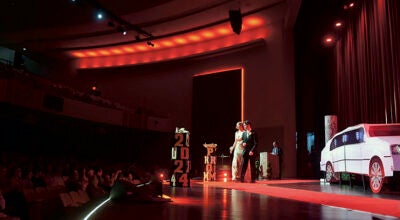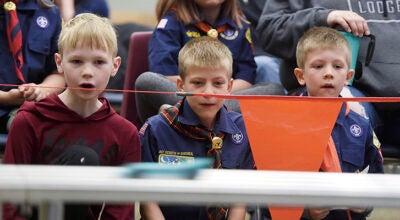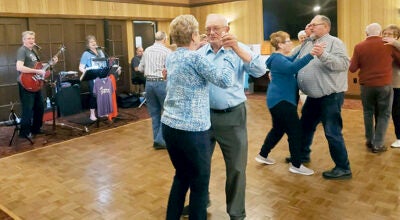Prepare to be gobsmacked
Published 10:51 am Saturday, July 13, 2019
Austin, in the year 1945, had a population of roughly 19,000 people. Would you believe it also had a staggering number of grocery stores?
Sixty-four to be exact.
See, I told you you’d be gobsmacked!
Mind you, they were not all shopping utopias like Kasak’s Grocery, or Clara’s (a Jack Sprat Grocery), or I.G.A. (Independent Grocers Alliance), or Knauer’s Market, or Taylors West Side Market, or the Square Deal Grocery.
No, no, the majority of the businesses were corner shops which we referred to as mom and pop groceries. But, come on now? Really 64?? Did Austin honestly need that many? What explains such a large presence?
The answer is simple. Cars. In most families there was only one, if that. And that one was used by the bread winner, the father, who drove it to work five days a week. It was almost unheard of for a mom to have her own personal vehicle. No, the little lady was stuck home without transportation.
So, what was she to do when she ran out of flour in the middle of making a cake or had no Wonder Bread for lunch sandwiches or, heaven forbid, had drunk the last dregs of her Folgers Coffee?
The answer was simple. She shed her apron and walked to the corner where there was a shop that filled all her immediate needs. Better yet, if she had children, they made the shopping trip for her.
How many of you remember doing that? In 1945, when I was 7, being the chosen one who got to make a run to the corner grocery was a big deal. It was, after all, my earliest exposure to the world of commerce. Mom gave me enough money to purchase one or two items with the unspoken promise that a nickel change would always be forthcoming — my reward for running the errand. Inevitably I bought a Cheerio. No, not the cereal, but the yummy chocolate covered vanilla ice cream on a stick.
If the urge for something different struck, it might have been a dreamsicle with the fruity coatings or a fudgsicle. Sometimes the nickel was shared with a sibling in which case a popsicle (the frozen drink on two sticks), broken in half did the trick. No reward ever cost more than five cents.
As we kids grew older and were allowed to ride our bikes on the street, we added baskets to the front handlebars. Such an appurtenance propelled us into big time commercialism for then we could do some serious shopping runs. And we could do them fast! To put things in perspective here, we’re only talking about a ride across the street or at most, down two blocks. Without question, we were rudimentary shopaholics in the making.
My father owned the Square Deal Grocery, so it would seem that all our shopping was done there … free! Not so. I remember tantalizing runs almost everyday in the summertime to Bradley’s Market, a tiny store on west Lyndale, a block from our house. The store couldn’t have been any larger than a medium sized bedroom and was at the front of the building. Keeping Bradley’s solvent seemed to be my family’s dedicated mission.
The wee stores were always at the front of the proprietor’s home. If that person needed to run her/his own shopping errand or go to a doctor’s appointment, the shop was closed until she/he returned.
I well remember feeling a slight sag as I entered Bradley’s followed by a little squeak as my weight put a strain on the worn wooden planks. It was also dark inside because the merchandise filled up the entire space leaving no crevices for light to squeeze through the small windows. The overall décor was in varying shades of brown, broken up by the colorful labels on the foodstuffs. And there were always those sticky, curly fly tapes hanging from the ceiling! Disgusting, but unquestionably effective!
The shop had a single tiny counter (a bit bigger than the size of that loaf of Wonder Bread) and it was low down because Mrs. Bradley was low down. To me as a kid, she seemed tiny, old and brittle, but in reality she was probably no more than 69. Of course, everyone knows that being 69 in 1945 was approaching brittleness.
When school was in session, mom and pop stores were where we bought school supplies such as tablets, erasers, pencils and those three-ring-binder circular reinforcement stickers. I don’t think there was a child in Austin who did not walk past a corner store on his way home for there were no school buses that whizzed us back and forth.
Buses were only for the farm kids who lived many miles out in the country. We city types never gave a second thought to walking to and from school everyday. It’s just what we did … in the heat and rain of spring and fall … and in the deep thigh-high snow of winter … all the while lugging home the heavy textbooks we needed for that night’s homework. And of course, the two-way journey was always uphill. Both ways!
There were, as well, two other powerful draws for us children, both psychological. For starters, the shop owners recognized us and called us by name making us feel like important consumers. And where kids of today are allowed to do outrageous, far-out feats such as flying alone across the country, in 1945 walking by yourself to the corner grocery was our version of executing an independent, unaided task, simply done on a much, much, much smaller scale. No one held our hands as we crossed the streets and no one, but us, was in charge of the money. Such responsibilities helped us realize our inner worth … our capabilities … don’t you see?
Today as you drive around Austin, you can easily spot the old mom and pop groceries. In every case the shops have been absorbed into the home. Still they have the undisputed, recognizable look of a once-upon-a-time grocery now turned living room.
No matter what the current merchants do, places like those 7-11 convenience stores will never compete with the coziness of the old, well-worn shops; places where you never had to stand in line and — like the Cheers Bar — everybody knew your name. For all of their chrome, glitz and bright lights, today’s shops will fall short of the charisma, charm and warmth of the old corner groceries. I regret that my future great-grands will not be able to go there — by themselves — and buy a Cheerio.




